yes, it's that simple
The short answer, yes. For years, sidewall damage has been a fatal blow to off-road tires. However, GlueTread has changed the game.
GlueTread products make sidewall repair simple and easy allowing the rider to repair their tire and continue riding. There is no need to remove the tire from the vehicle, no need to put 20+ plugs in a single hole and best of all, no need to walk home!
It's pretty simple, check out the video below!
External Patch Kit
External Patch Kit
External Patch Kit $23. 95
Sidewall Seal Kit
Sidewall Seal Kit
Sidewall Seal Kit $24.95
All-in-One Deluxe
All-in-One Deluxe
All-in-One Deluxe $95.95 $125.00
Accelerator
Accelerator
Accelerator $12.95
DIY Sidewall Repair Process
To repair your sidewall, start by picking out a GlueTread kit that works best for your application.
Tire Prep
Then, prepare the sidewall with the included sandpaper as described by the instructions. (You can also check out one of the videos in our YouTube Library.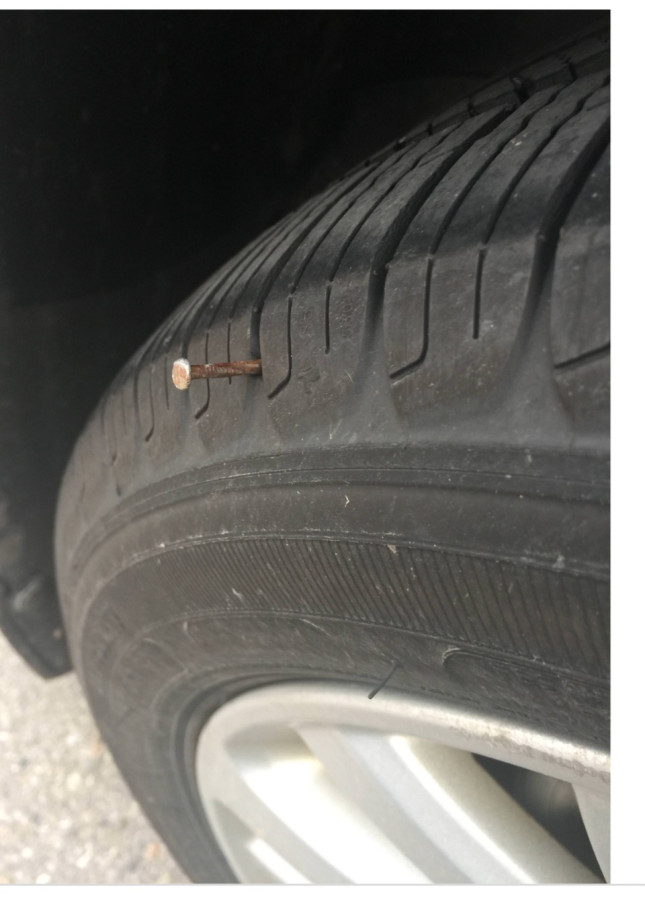 )
)
YouTube Library
Patch Application
Next, apply the adhesive to the damaged sidewall and place the patch over top of the adhesive.
Adhesive Curing
Finally, apply firm pressure to the patch and allow the adhesive to cure.
GlueTread adhesive is about 90% cured after 20 minutes and fully cured after one hour. If you don't feel like waiting, pick up some GlueTread Accelerator that allows you to spray the patch and cure it immediately.
Check out the video below that shows the durability of our patch!
Check out our full how-to page here!
Or
Head to the GlueTread Store to claim your kit!
Posted by Blair Lampe Know How
Your tires might not be the most complex part of your vehicle, but they’re arguably among the most indispensable. Keeping your tires in good condition is integral to both safety and performance, so when they suffer damage, it’s important to take care of it immediately. You’re likely familiar with patching tires, but are there limits to this practice? For instance, can you patch the sidewall of a tire?
Keeping your tires in good condition is integral to both safety and performance, so when they suffer damage, it’s important to take care of it immediately. You’re likely familiar with patching tires, but are there limits to this practice? For instance, can you patch the sidewall of a tire?
Tires have more going on than meets the eye. Over the years, tire technology has evolved to make them stronger, longer-lasting and safer in various driving conditions. There are many parts of a tire, but the two main external parts are the tread and the sidewall.
The tread is what contacts the road. It’s very thick, it wears down over time, and it’s the part you pay special attention to when you’re watching out for alignment issues. It is meant to wear down, but evenly.
The sidewall is thinner because it is not designed to contact the road and wear down. It protects the inner plies of the tire, which are structural, and it flexes as the tire rotates and bears the weight of the vehicle.
Many people keep tire plug kits in their vehicles for emergency roadside repairs, but patches are a little more in-depth. In order to properly install a patch, the tire must be safely removed from the vehicle and the rim. The hole or tear area must be cleaned up and covered with vulcanized cement so that the patch can be installed from the inside and sealed before the tire is reinstalled on the vehicle.
The patch adheres to the tire’s material around the damage, and the added pressure of inflation actually works to press the patch outward further plugging the hole. If done correctly, this creates a seal that can last the rest of the tire’s life. Patches are viable for repairing small holes or tears, generally, those that are 1/4 inch or less.
Fixing Damage in the SidewallIf you have a leak, hole or tear in your sidewall as opposed to your tread, you should not repair it with a patch. The thinness of the sidewall gives little material for a patch to adhere to, and the damage to the sidewall leaves the tire structurally compromised. As mentioned before, the sidewall tends to flex, putting extra stress on the repair and increasing the likelihood of patch failure, which is more likely to occur at higher speeds and pressures.
The thinness of the sidewall gives little material for a patch to adhere to, and the damage to the sidewall leaves the tire structurally compromised. As mentioned before, the sidewall tends to flex, putting extra stress on the repair and increasing the likelihood of patch failure, which is more likely to occur at higher speeds and pressures.
Patching the sidewall is simply not a good idea, as a leak or blowout while the vehicle is underway could result in loss of control with catastrophic consequences. So if you end up with a damaged tread, you can plug and patch away, but if the damage is to your sidewall, you’re going to have to replace the tire, which usually means replacing the fronts or rears in pairs.
So can you patch the sidewall of a tire? The answer is a solid no. Luckily, sidewall damage is far less common than damage to the tread, and you can minimize it by paying attention to road conditions, not overloading your vehicle, staying away from the curb when you’re parallel parking, and keeping your tires properly inflated, rotated and maintained.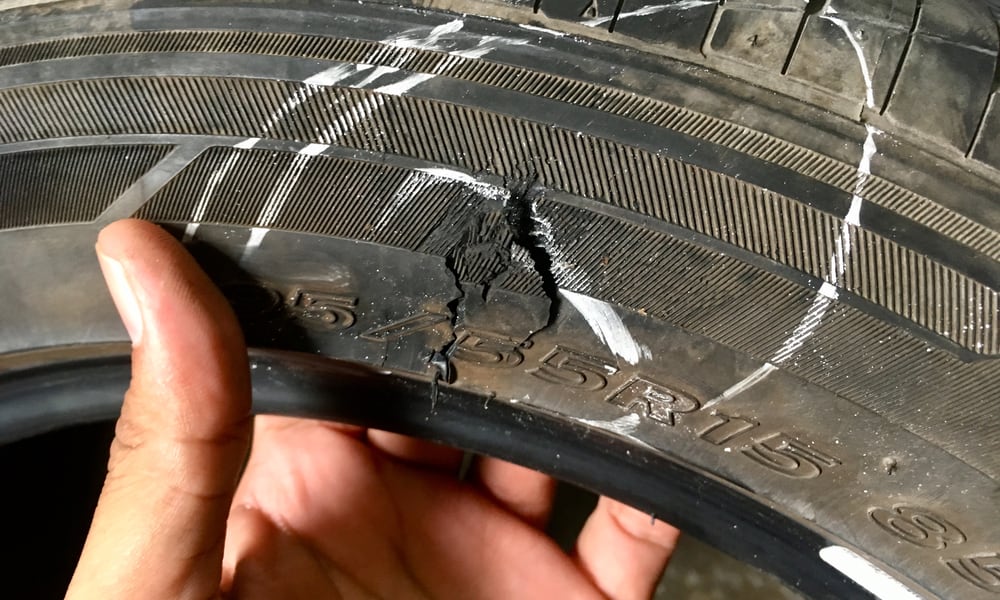
Check out all the tires, wheels and accessories available on NAPA Online, or trust one of our 17,000 NAPA AutoCare locations for routine maintenance and repairs. For more information on patching tires, chat with a knowledgeable expert at your local NAPA AUTO PARTS store.
Photos courtesy of Blair Lampe.
Blair Lampe is a New York-based professional mechanic, blogger, theater technician, and speechwriter. In her downtime she enjoys backpacking wherever her boots will carry her, rock climbing, experimental theatre, a crisp rosé , and showering love on her 2001 Sierra truck.
KrasnodarArmavirGelendzhikTuapseSochiNovorossiyskBelorechenskMaikopRostov-on-DonSimferopolStavropolAstrakhanst. Kanevskaya station Vyselkist Dinskaya Volgograd Voronezh
TSC No. 13 pos. Verkhnebakansky, st. Bakanskaya, 8A
+7 (928) 331-07-76
Around the clock
TSC No.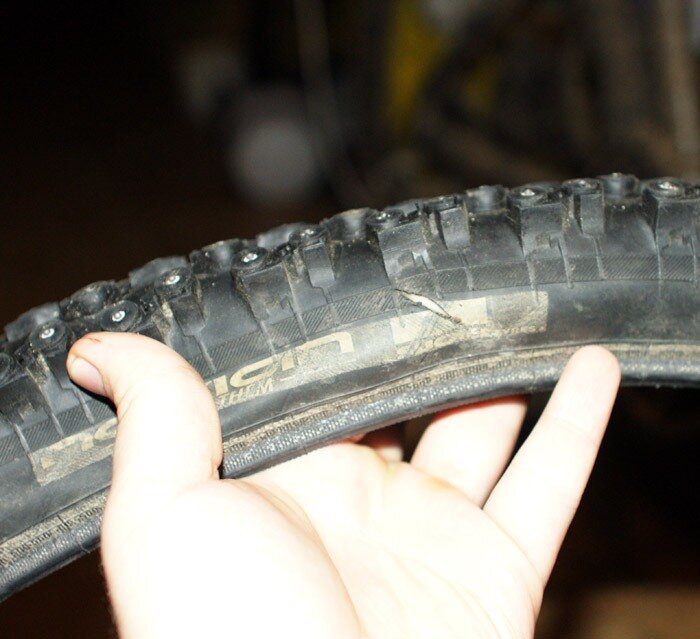 29, Volgograd, 30th Anniversary of Victory Blvd., 9
29, Volgograd, 30th Anniversary of Victory Blvd., 9
+7 (937) 088-44-27
Mon-Fri from 09.00 to 20.00, Sat from 9.00 to 19.00, Sun from 10.00 to 18.00
TSC No. 28, Rostov-on-Don, st. Dovatora, 159
+ 7 (988) 997-61-11
Mon-Fri from 09.00 to 20.00, Sat from 9.00 to 19.00, Sun from 10.00 to 18.00
TSC No. 18, Krasnodar, Berezovy village, Karl Gusnik st., 17
+ 7 (938) 538-53-11
Mon-Fri 9:00 - 20:00; Sat 9:00 - 19:00; Sun 10:00 - 18:00
TSC No. 27, Sochi, Batumi Highway 94/20
+7 (928) 272-72-55
Mon-Fri from 09.00 to 20.00, Sat from 9.00 to 19.00, Sun from 10.00 to 18.00
TSC-26 Voronezh, st. Volgogradskaya 30
+7 (930) 406-78-84
Mon-Fri from 9.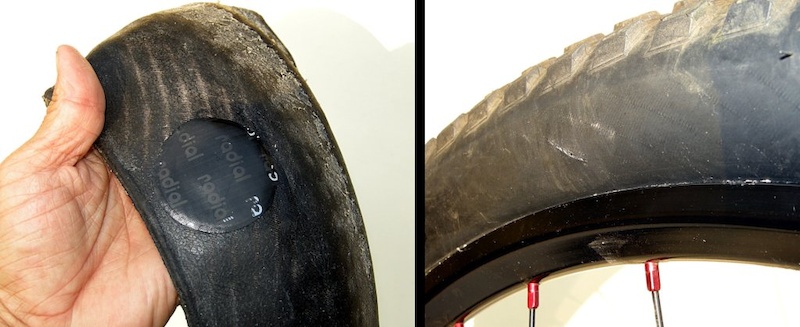 00 to 18.00
00 to 18.00
TSC No. 25, Volgograd, Bureyskaya st., 8
8 (937) 088-42-78
Mon-Fri from 9.00 to 18.00
TSC No. 22, Stavropol, ave. Kulakova, 18
+7 (938) 517-77-03
Mon-Fri from 9.00 to 18.00
TSC №21 Armavir, Efremova 319
+7 (918) 322-76-38
Mon-Fri from 09.00 to 20.00, Sat from 9.00 to 19.00, Sun from 10.00 to 18.00
TSC No. 19, Krasnodar, st. Selezneva 197/5
+7 (989) 169-34-16
Mon-Fri 9:00 - 20:00; Sat 9:00 - 19:00; Sun 10:00 - 18:00
TSC No. 17 Astrakhan, 1st passage Rozhdestvensky 11a
+7 (988) 172-66-88
Mon-Fri from 9.00 to 18.00 Sat-Sun day off
TSC No. 16, Rostov-on-Don, st. Dovatora, 154/5
Dovatora, 154/5
+7 (989) 527-11-86
Mon-Fri from 9.00 to 18.00 Sat-Sun day off
TSC No. 15 st. Vyselki st. Luneva, 29a
+7 (918) 199-67-89
Mon-Fri from 9.00 to 18.00, Sat from 10.00 to 15.00, Sun from 10.00 to 15.00
TSC No. 14 Crimea, Simferopol, 11 km. Moscow highway
+7 (938) 517-77-82
Mon-Fri from 9.00 to 18.00 Sat, from 10.00 to 15.00, Sun closed
TSC No. 12, Gelendzhik, st. Lunacharskogo, 310A
+7 (918) 027-88-99
Mon-Fri from 09.00 to 20.00, Sat from 9.00 to 19.00, Sun from 10.00 to 18.00
TSC No. 11 st. Kanevskaya, st. Sverdlikova, 277d
+7 (988) 312-97-70
Mon-Fri from 09.00 to 20.00, Sat from 9.00 to 19.00, Sun from 10.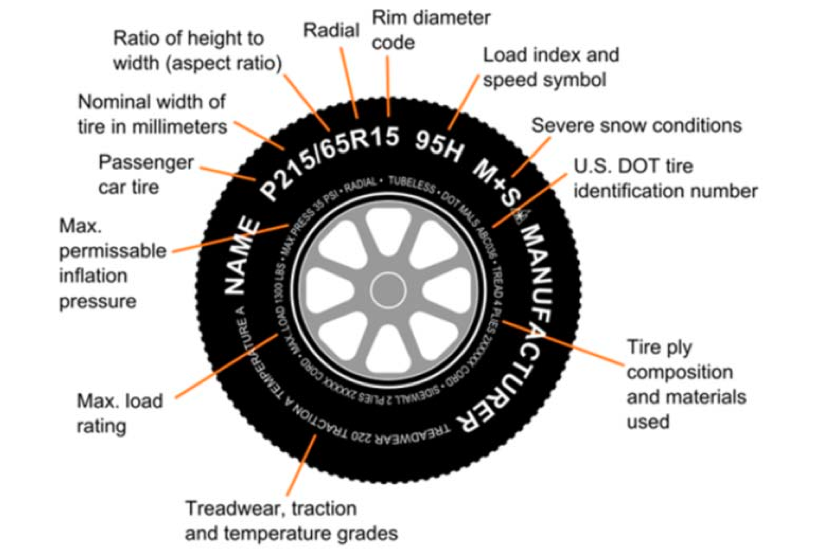 00 to 18.00
00 to 18.00
TSC No. 10, Krasnodar, st. Russian, 339
+7 (989) 298-90-17
Mon-Fri 9:00 - 20:00; Sat 9:00 - 19:00; Sun 10:00 - 18:00
TSC No. 9, Tuapse, p. Kroyanskoe, st. Solnechnaya, 1B
+7 (918) 060-47-17
Mon-Fri 9:00 - 20:00; Sat 9:00 - 19:00; Sun 10:00 - 18:00
TSC No. 8, Krasnodar, st. Stavropolskaya, 214/5
+7 (918) 060-47-08
Mon-Fri 9:00 - 20:00; Sat 9:00 - 19:00; Sun 10:00 - 18:00
TSC No. 7, Krasnodar, st. Dinskaya, Federal highway M4 1308 km, 3
+7 (918) 060-47-07
Around the clock
TSC No. 6, Belorechensk, st. May Day, 122
+7 (988) 369-96-37
Mon-Fri from 09.00 to 20.00, Sat from 9.00 to 19. 00, Sun from 10.00 to 18.00
00, Sun from 10.00 to 18.00
TSC No. 5 Maykop, st. Hakurate, 555
+7 (918) 060-47-05
Mon-Fri 9:00 - 20:00; Sat 9:00 - 19:00; Sun 10:00 - 18:00
TSC No. 4, Krasnodar, Turgenevskoe shosse, 6
+7 (918) 060-47-13
Mon-Fri 9:00 - 20:00; Sat 9:00 - 19:00; Sun 10:00 - 18:00
TSC No. 3 Krasnodar, Babushkina street, 233
+ 7 (918) 060-47-03, + 7 (918) 060-47-03
Mon-Fri 9:00 - 20:00; Sat 9:00 - 19:00; Sun 10:00 - 18:00
TSC No. 2, Krasnodar, st. Dzerzhinsky 98/7
+7 (918) 060-47-02
Mon-Fri 9:00 - 20:00; Sat 9:00 - 19:00; Sun 10:00 - 18:00
TSC No. 20, Krasnodar, Sormovskaya st., 75
+7 (989) 839-98-20
Mon-Fri 9:00 - 20:00; Sat 9:00 - 19:00; Sun 10:00 - 18:00
Another season of changing shoes is approaching.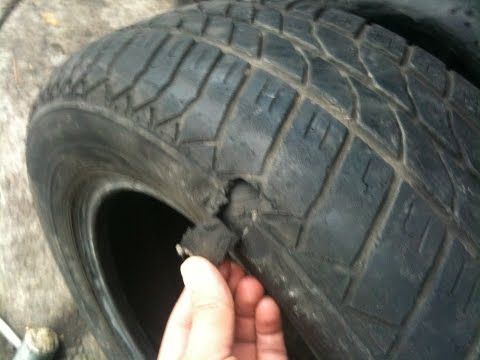 And you may remember that on one of the tires after the last winter/summer there is a jamb - a small bump. I don’t want to run to the store for the sake of one new tire. We understand. Or maybe it looks even better if repaired?
And you may remember that on one of the tires after the last winter/summer there is a jamb - a small bump. I don’t want to run to the store for the sake of one new tire. We understand. Or maybe it looks even better if repaired?
Yes, not every wheel that has met with a nail, rebar sticking out of the ground or a sharp stone on the road is considered damaged. Everything, of course, depends on the scale of the damage and its location on the tire itself. Some are easily repaired, while others are simply impossible to do - the tire can only be sent to the trash.
A bulge on a wheel, referred to by drivers as a bump or bulge, is the most common tire sidewall defect. It appears due to a collision with an obstacle or after falling into a pit, more often at high speed. The threads of the sidewall carcass are easily damaged by impact, and the tire at this point can no longer hold the load and air pressure - swelling appears. A small bump sooner or later turns into a big one, and driving with such a defect is dangerous - the wheel can shoot at any moment.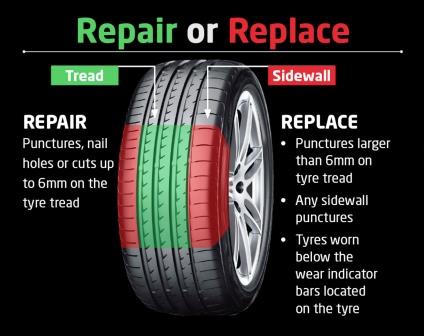 At high speed, this is fraught with loss of control, departure from the road and a rollover.
At high speed, this is fraught with loss of control, departure from the road and a rollover.
The quality of roads in Kazakhstan contributes to the appearance of bulges on tires
Some types of bulges are repairable, although this is a temporary measure. Not a single patch can restore the factory rigidity. Ideally, change the tire.
Special cord patches can extend the life of a tire with a herniation, even if the swelling has appeared on the tread. The sidewall is a different story. If the swelling appeared at a distance of more than 40 mm from the side, it can be repaired. If not, then the wheel needs to be replaced. Blisters on low profile tires are most often non-repairable.
For maximum safety when riding with a repaired bump, insert the tube. This is an inexpensive and reliable solution. On our market, you can find cameras made in China and Russia, the latter are slightly more expensive, but also of better quality.
The elimination of a side cut is a serious operation, therefore, as in the case of a bump, you will have to go to the professionals. We need cord patches, fortunately in our time they are of different sizes and with a different number of layers. And if you do it wisely, then you can't do without special tools and vulcanization.
We need cord patches, fortunately in our time they are of different sizes and with a different number of layers. And if you do it wisely, then you can't do without special tools and vulcanization.
A cut, by the way, cannot be healed in all cases. If the gap is in the shoulder area of the tire, it is unlikely that anyone will undertake to repair it, since no guarantees can be given here. However, our Kulibins take on even the most difficult cases, cutting out parts of the sidewalls from the tires and even weaving the cord on their own.
Tire overhaul. We would not put such a wheel on ourselves
Low profile tires can be repaired, but more difficult. A tear in the sidewall is easier to seal on tires with a medium or high profile.
Sometimes a cut is confused with a pluck. This is when the outer layer of the sidewall caught on something sharp, a tear formed, but the frame itself remained intact. There is nothing wrong with that, although the drivers at the tire fitting company successfully repair the cut, for which they take it accordingly.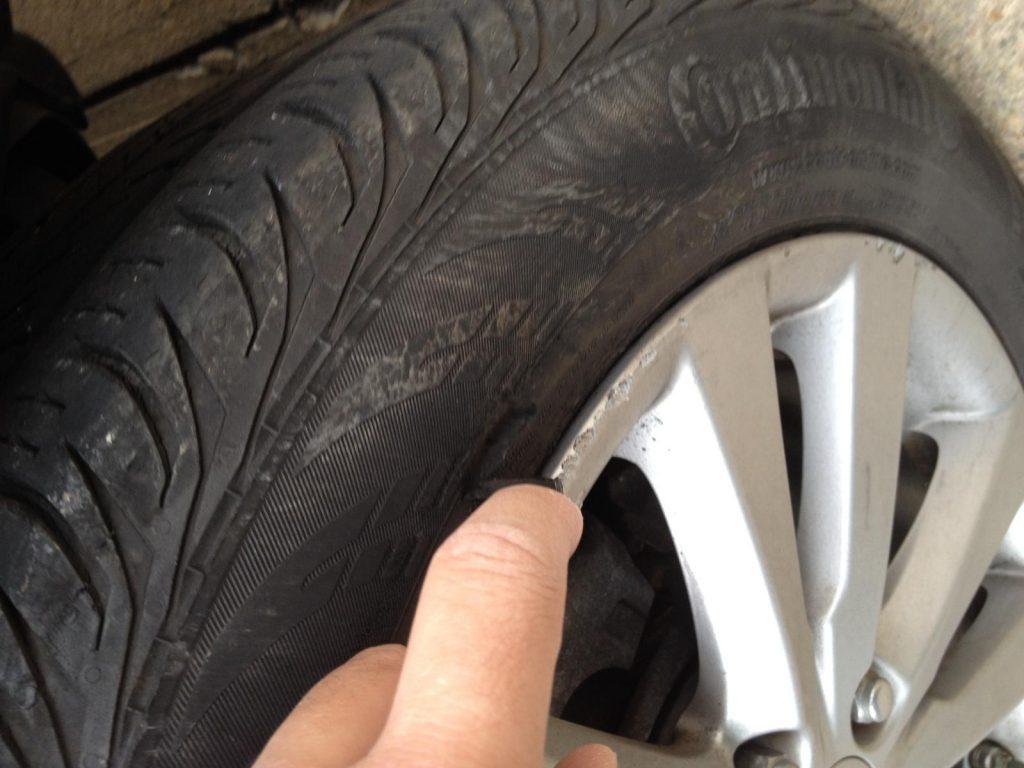
If a piece of rubber remains on the sidewall, then glue it with ordinary superglue (101st). If it came off, then it is better to cover it with raw rubber and vulcanize. Leaving the pluck bare is not recommended, because the tire carcass, often consisting of a metal cord, will quickly corrode.
In Europe, defective or used tires are perforated before being sent for scrap to prevent their resale and possible operation. But they don’t know that we have such holes on the sidewall patched once or twice
Cuts and hernias are not the only possible damage to the side of the tire. You can also spoil the side ring, in the process of changing shoes, for example. If it’s for garlic, then such a tire is already dangerous. Sooner or later, the tire pressure and the load in motion will start to squeeze the rubber off the rim - a wheel explosion can occur.
This ailment is repaired if the wire ring - the base - is intact.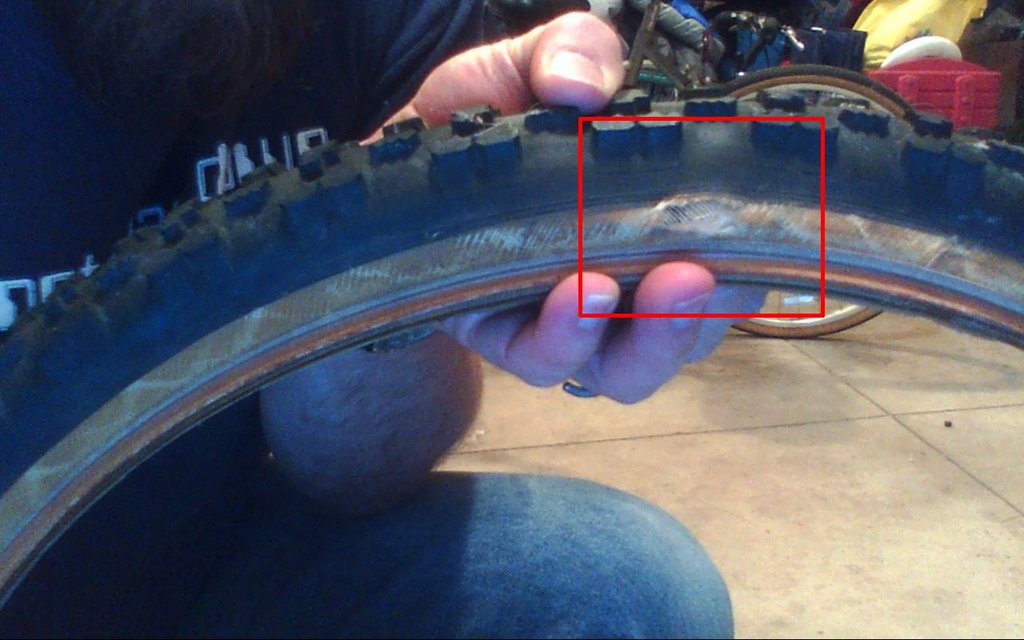 There are no special technologies and materials to correct this particular problem, but most often craftsmen use a two-component composition for chemical (also called cold) vulcanization. After mixing, the mass is pressed into a fat-free damage. Compound manufacturers recommend waiting 72 hours before mounting a tire. Of course, our masters do not pay attention to this condition - they put the tire right away. And it’s good if the wheel is flat because of this at night in the parking lot, and not on the road.
There are no special technologies and materials to correct this particular problem, but most often craftsmen use a two-component composition for chemical (also called cold) vulcanization. After mixing, the mass is pressed into a fat-free damage. Compound manufacturers recommend waiting 72 hours before mounting a tire. Of course, our masters do not pay attention to this condition - they put the tire right away. And it’s good if the wheel is flat because of this at night in the parking lot, and not on the road.
If the side ring tears are barely noticeable, but the wheel still deflates, then you can use a special liquid - a bead seal designed to seal a tubeless tire.
These seals have been used in motorsport for some time. In particular, in the American Formula D Drift Series, drivers used compounds to keep the tire on the rim even with minimal tire pressure. Now they are banned.
Pay attention to the left rear wheel of the Nissan Silvia S13. Due to too low pressure, it was literally taken off the disk under load
Every schoolchild has faced this problem when patching the inner tube of his bike after hitting something sharp. Repairing a car tire puncture with your own hands will also not be difficult even on the road. But for this you will need a pump (or compressor) and a universal tire repair kit with harnesses. All this is sold at any car market or gas station.
Repairing a car tire puncture with your own hands will also not be difficult even on the road. But for this you will need a pump (or compressor) and a universal tire repair kit with harnesses. All this is sold at any car market or gas station.
Repairing a tire on the shoulder with harnesses
The process is simple. If we are talking about the front wheels, then in most cases the wheel can not even be removed, it is enough to turn the steering wheel in the right direction, find the puncture site and carry out repairs. First, the hole is cleaned with a helical awl from the set. The tourniquet itself is smeared with glue and tucked into the eye of the awl, after which it is inserted into the tire hole. With a sharp movement, the tool is removed, and the tourniquet remains in place and clogs the hole. The tails are cut with a knife, but not at the root, it is recommended to leave about 20 mm. The tire is inflated and checked.
Sometimes a nail or self-tapping screw clogs the hole by itself, remaining in it. If you see a hat in a tread, do not rush to pull it out. While the pressure is holding, move to vulcanize. And sometimes they drive with a screw in a tire for weeks.
If you see a hat in a tread, do not rush to pull it out. While the pressure is holding, move to vulcanize. And sometimes they drive with a screw in a tire for weeks.
Repair of a puncture at a tire shop
Punctures are also repaired with harnesses at a specialized service, although among professionals such repairs are not considered long-term. After a few months, the flagella dry out and can let air through. There are more advanced methods like cold and hot vulcanization. The latter is more reliable. In this case, the hole is sealed with an elastic patch, and the funnel from a foreign object is filled with a special compound. After that, a vulcanizer is put on the tire, it heats up the rubber and solders it.
In addition to the plaster, the puncture is also repaired with special cord fungi. Craftsmen process the puncture site: drill it and treat the surface with a tool to roughen it. Then the repair area is lubricated with glue (it is also called cement) and a fungus is introduced.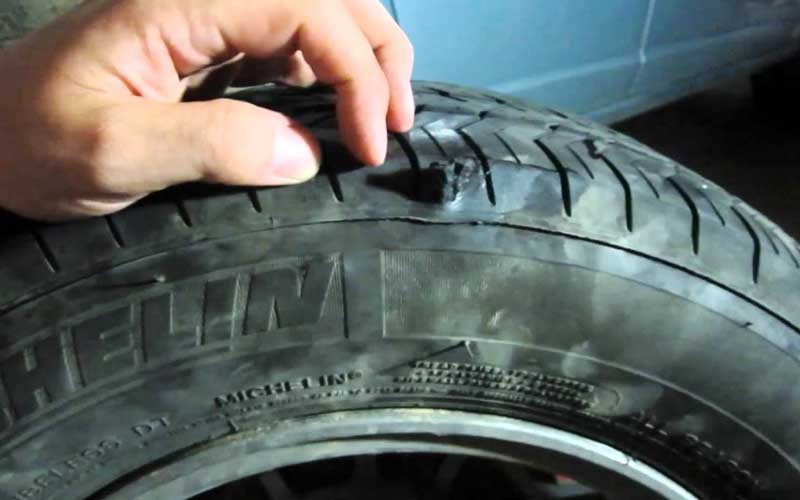 This is done from the inside of the tire. The cap of the fungus is rolled, and the excess legs are simply cut off from the outside.
This is done from the inside of the tire. The cap of the fungus is rolled, and the excess legs are simply cut off from the outside.
Puncture repair with sealant
With the advent of tubeless wheels, and later run flat tires, many automakers began to abandon spare wheels. Instead, repair kits with compressors are supplied with the machines. A repair kit is essentially a bottle of pressurized sealant. Later, such spray cans began to appear on the shelves of ordinary car dealerships.
This method has not taken root in the CIS, because the condition of the roads makes it necessary to have at least a stowaway in the kit, but it can also be considered as a method of repair on the road.
The car must be jacked up and sealant must be pumped into the damaged wheel through the nipple. Next, you should spin the wheel, then pump it up, lower the car and drive a few hundred meters. If the tire tightness has not been restored, repeat the procedure.
If the tire tightness has not been restored, repeat the procedure.
For commercial vehicles, cutting the tread with a special device (regrower) is a common thing. Moreover, such tire retreading is provided by the factory (marked REGROOVABLE on the sidewall) to increase the service life. But there are entrepreneurs who undertake to deepen the grooves in tires for passenger cars. But they are not intended for such an operation. Often used tires for sale are “refreshed” in this way. Be careful!
What is the danger?
The worst option is that the retreaded tire will shoot out on the road, as the master can damage the undertread layer when deepening the grooves. Such a tire will not be able to hold pressure at some point. There will be a boom! At best, the tire will indeed last a little longer, but is the game worth the candle? We think it's not worth it.
How is cutting made?
A regrower is used to cut the tread.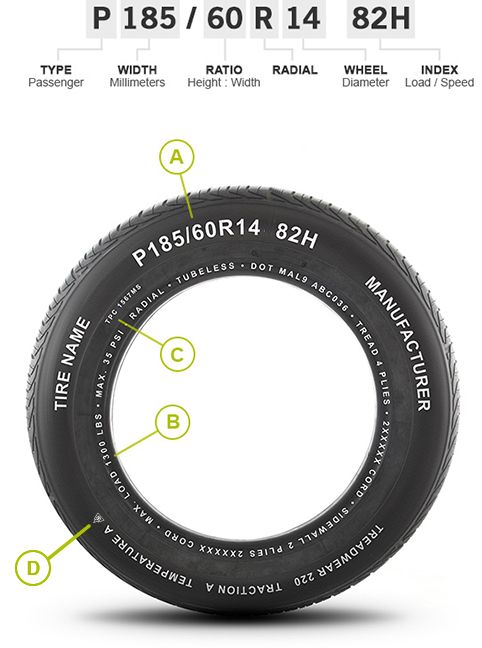 Roughly speaking, this is a large soldering iron with interchangeable tips of various shapes. It goes through rubber like a knife through butter.
Roughly speaking, this is a large soldering iron with interchangeable tips of various shapes. It goes through rubber like a knife through butter.
If the tire is for passenger cars, then it is worth taking on a regrower only in one case - when part of the tread pattern was welded with "new" rubber during repair. This is where threading comes in handy in order to restore the grooves and symmetry of the tread.
Vehicle operation is prohibited if:
— tires have a residual tread height of less than 1.6 mm;
- tires have punctures, cuts, ruptures that expose the cord, as well as carcass delamination, tread and sidewall delamination;
- tires in size or load capacity do not match the car model;
- tires of various sizes, designs (radial, diagonal, chamber, tubeless), models, with different tread patterns, winter and summer, studded and non-studded, new and restored, are installed on one axle of the car;
— Tires retreaded according to the second repair class are installed on the front axle.